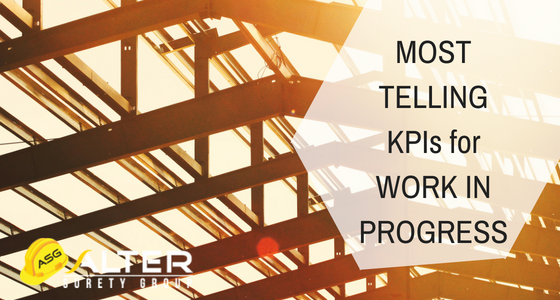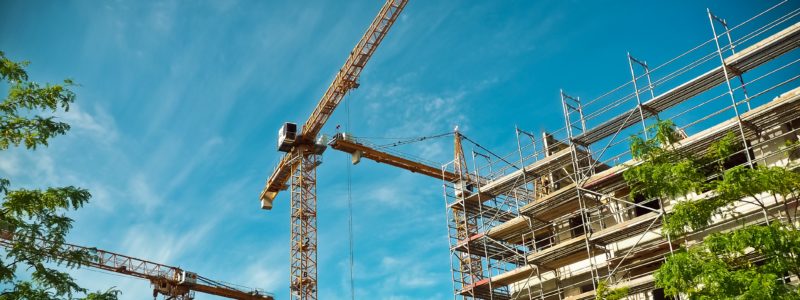
Tag: construction


What does your Percentage of Completion data say about your company?
Work in Progress (WIP) is what a construction company or contractor invests in delivering a completed project, including materials, labor and overhead throughout the process of construction and in all stages of a construction contract, right? Well, yes and no. Those are definitely components of a WIP.
In reality, a WIP translates to numbers or, more accurately, an accounting schedule. It is a moniker attached to the balance of costs associated with a project as it moves from one stage to the next. And those numbers end up on a P&L statement and balance sheet, which bankers and sureties consider when setting rates.
For standard construction accounting using a Percentage of Completion (POC) methodology, WIP schedules for each accounting period are required (per GAAP). POC is calculated by dividing actual costs (to date) by estimated total costs. Other POC data tracked include revenues, gross profits and billings.
WIP reporting serves an important function as an early warning system by tracking actual job totals for the completed percentage of the job during and through a specific period, and offering a snapshot of profitability at a specific point. Accurate WIP data reporting can head off cash flow and budget problems, which are extremely important to smaller contractors that perform one contract at a time. Since a timely WIP schedule offers a helicopter view of contract Key Performance Indicators (KPI), it is also an immensely important strategic tool for larger companies with multiple contracts ongoing.
Top Key Performance Indicators for a Construction WIP
For WIP reporting to be useful, the KPIs tracked for actual job totals is critical. Depending on the size of a company and type of construction, your most crucial KPIs may vary. However, a construction company should always know where it stands on each project, at each period, for the following KPIs:
- Underbillings – although carried as an asset on a balance sheet, this number can signal profit erosion, unapproved change orders, billing issues or vendor invoicing delays that may result in cash flow problems. And cash flow problems usually equate to increased contractor financing costs.
- Overbillings – while this improves cash flow and keeps the contractor from having to dip into his own pocket, it results in a balance sheet liability. That, in and of itself, is not necessarily a negative unless it results in a pattern of “job borrowing.”
- Job Borrow – this occurs when billings are more than actual to-date costs incurred AND the difference is more than anticipated total gross profit. If your budgeted gross profit is 12% on a half million-dollar job ($60K) and you’ve billed $300K YTD on $200K of actual costs, you’ve “borrowed” $40K against the job. If that money stays in the construction account, it’s not as big of a problem. But if it goes to pay for other general or administrative expenses, the money won’t be there to finish the job. A company that robs Peter to pay Paul may limit its ability to secure construction bonds with a reputable surety.
- Profit Fade/Spike – cost overruns due to sloppy management or poor estimating can cause profit fade, as can inaccurate reporting in prior periods. On the other hand, profit spikes in final reporting periods may indicate that you were too conservative with beginning estimates. Margin history and margins for open jobs should run relatively consistent. Remember, the bank may have made financing decisions based on profit estimates. Accounting could be impacted, and IRS taxes may be affected, too, by profit fade or spike.
Your company’s monthly, quarterly or annual WIP schedule provides profitability insights not only to your CFO and bankers, but also to bonding agents. These statements can affect how sureties view your financial practices and bonding capacity. For more information on understanding the effects of Work in Progress KPIs on construction bonds and limiting other risks, contact the professionals at Alter Surety Group at (305) 517-3803 or visit www.altersurety.com.

What’s in store for some major markets in the rest of 2017
If you haven’t heard, there is a homebuilding boom on in Texas. Not just a little uptick, but a full-blown BOOM. Of the top five 2017 homebuilding markets — according to recent Trulia research based on building permit data —- three are in Texas. Dallas (#1), Houston (#2) and Austin (#5 behind New York and Atlanta) have enjoyed steady increases in job growth and very healthy post-recession housing appreciation, with housing starts trending well above historic averages. Among those three top Texas metro areas, 130,000 new home starts were on track for 2017. That number equals more than 10 percent of all U.S. homebuilding permits, and the combined starts of nearly 50 other big U.S. metro areas.
